Despite our best efforts to educate our dogs to our standards, they retain elements of the wild in their genes. You might be excited for a walk with your dog and suddenly out of the blue, the dog starts biting the lead and you ask yourself, why does my dog bite his lead when walking?
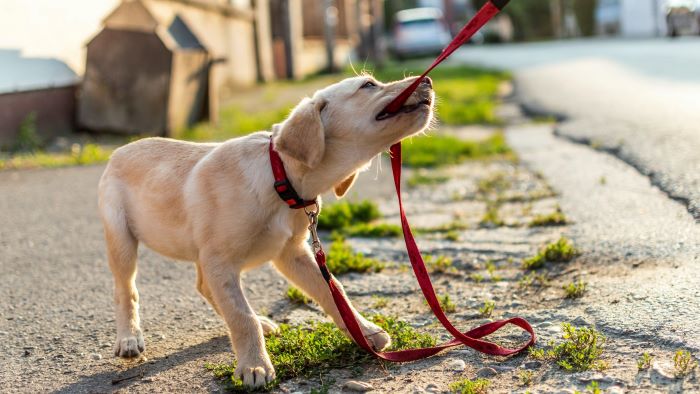
Many dog owners have experienced the frustration of their dogs biting their lead when walking. This behaviour can make the walk unpleasant, stressful and even dangerous for both the dog and the owner. But why do dogs bite their lead when walking? And how can this problem be solved?
There are several possible reasons why dogs bite their lead when walking, such as over-excitement, boredom, frustration, anxiety or learned behaviour. Understanding the root cause of this behaviour can help you find the best solution for your dogs. 🐶
Why Does My Dog Bite His Lead When Walking?
Dogs may bite the lead while walking due to several reasons. Though biting lead seems to be a common behaviour with no serious issue, it can be fatal sometimes. It becomes really hard to get the biting dog under control while walking. The dog may drag the owner to the running traffic.
It is important to understand why your dog is biting the lead. Some dogs 🐶 bite the lead because they are bored whereas some others get overexcited by the surroundings. Therefore, knowing the correct reason 💡 will help you assist the dog and teach him not to bite the lead with positive reinforcement.
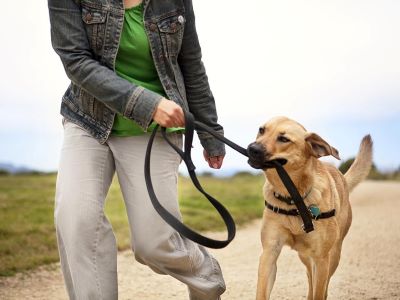
For some dogs biting a lead seems to be a playful activity because you might have encouraged the behaviour mistakenly. When your dog bites the lead, you often try pulling it and such a behaviour seems like a tug-of-war to your dog. Thus, next time he will start biting the lead whenever he wants your attention.
Why Stop Your Dog When Biting the Lead?
Encouraging biting behaviour is like inviting your dog 🐶 to bite strangers. Yes, it is true. Once you let your dog bite random things like a lead, he will slowly and gradually think that biting is normal whether it is biting toys or people. Over time, this will reinforce negative behaviour like aggression.[1]
No doubt on the other hand it will also cost you a lot due to the damage of leads every time you go on a walk. Additionally, it will create a frustrating relationship between you and your dog. Leash biting isn’t a behaviour you want to persist. Dog bites, in general, are something to discourage so that your pet won’t bite a stranger.
How to Stop Lead Biting When Walking?
Lead biting should never be encouraged and you should always teach your Fido the behaviour you want. Leash training is a way long process and even the dogs 🐶 trained for it can start biting the lead. Therefore, it is important to stop the behaviour by teaching them proper leash manners and when to let dog off lead.
Don’t Tug Back
You might have experienced this before. You are on a walk with your dog and suddenly he starts biting the lead. Your first instinct would be to pull the lead to get it off the dog. However, by doing this you are not restricting the behaviour, but encouraging it.
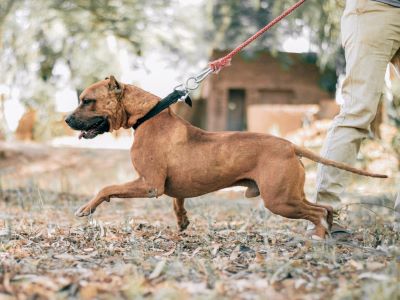
Tuging back the lead means encouraging your dog to play tug-of-war and giving attention to him whenever he bites the lead. Moreover, pulling the dog on a leash can harm him.[2] Whatever the reason 💡 might be behind your dog biting the lead, you should never pull back the lead.
Opt for High-Quality Leads
Consider getting a high-quality, strong and durable lead like a double ended dog lead for your dog. It’s important to learn how to use double ended dog lead correctly. Many parents are mistaken in not buying a strong lead for their small-breed dogs 🐶 or puppies. However, no matter how small your dog is, it is important to consider the durability of a lead when buying one.
Just like your utilities, value the leash. If you will value the leash then you will be more motivated to stop the dog from biting it and teach him the correct behaviour.
Reward the Behaviour
When training your dog for commands or good behaviour at home, you always reward your Fido 🍖 with his favourite treats. The same goes for being outdoors. While on a walk, you should always carry your pet’s chew toys and a handful of treats.
What to do when the dog starts biting the lead:
- Firstly, distract him by showing his favourite treat in your hand.
- Lure him so that he is obliged to leave the lead.
- Do not reward immediately.
- Make him follow any command like ‘sit‘, ‘stand‘ or ‘heel‘.
- Reward that behaviour when the dog follows the command.
Start Early
Leash training is very important for pet dogs. It helps control the dog behaviour in public places. A well-trained dog 🐶 will not bother the owner during outdoor visits. Thus, you should start training your dog at an early age.
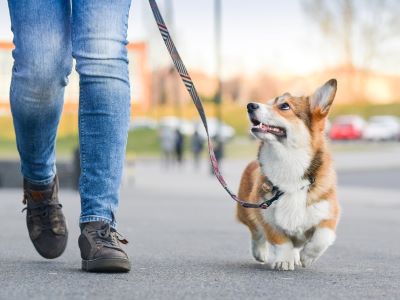
Once the puppy is comfortable outdoors, you should slowly and gradually introduce the lead and train him to walk on the lead. The training would also include teaching him heel and come commands so that the dog would come to you no matter what. Behaviour knitted from an early age is always strongly influenced.
Have an Alternative Tug and Biting Toy
Sometimes, the dog simply bites the lead when he is not stimulated properly. As a paw parent, it is your responsibility to get your dog 🐶 enough play, toys and other activities to relieve their boredom and keep them stimulated.
If your dog constantly bites the lead, try playing with your dog using tugging and biting toys before the walk to provide them with stimulation. You can also take a chew toy 🧸 along during the walk to distract the dog while biting the lead.
Be Aware of Triggers
While walking your dog encounters a different surrounding from your home and he may want to explore it. Some elements overwhelm the dog like other dogs or children playing in the park. keep an eye on your dog and observe when he starts biting the lead.
According to experts at petMD, “In situations where aggressive behaviour is more likely to occur (e.g., walks in the park), the dog 🐶 must be kept away from potential victims and be under constant control.“
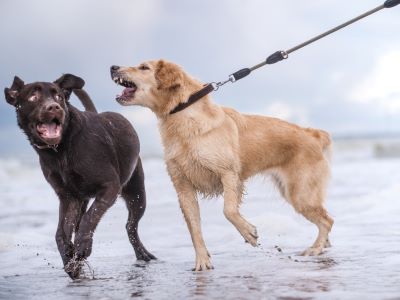
If he is carried away by any of the triggers then try to keep your dog away from them. Make sure the dog does not have chaotic surrounding that makes him anxious and triggers him to bite things. Anxious dogs may need quiet walks while spirited dogs may benefit from others being around.
FAQs
Why does my dog like to chew his leash?
Biting the lease is their way of attempting to get your attention. Leashes resemble chew toys. Sometimes dogs get overly excited and play with whatever item is around them. They also bite the leash due to lack of stimulation or overstimulation.
Is it OK for a dog to chew on a leash?
It may seem like just bad behaviour, but leash biting is often a symptom of a dog being frustrated or not fully understanding leash walking. It’s especially common amongst young, playful, and excitable dogs, but with training, it can be prevented or eliminated.
Why do dogs pull against the leash?
Dogs pull to get where they are going. Dogs want to engage with the environment and the surroundings as the outdoors seem completely different from the house. Wearing a leash and being tethered to a human is not a “natural” behaviour for dogs.
What to do if the dog bites a leash?
Stand still until your furry friend starts acting “normally” again. Another way is to hang the loop of the leash over a fencepost while you walk away. If the dog stops, you can turn around and continue your walk with him.
Wrapping Up
Dogs bite their lead when walking for different reasons, depending on their personality, temperament and environment. Some dogs may do it out of excitement, fun or frustration, while others may do it out of anxiety, over-arousal or social interaction.
Switching your dog to the best double ended dog lead can provide more chewing and tugging satisfaction for dogs prone to leash biting behaviors.
To stop dogs from biting their lead when walking, you need to identify the underlying cause of this behaviour and address it accordingly. By doing so, you can make the walk more enjoyable, safe and rewarding for both you and your dog. Last, but not least, you may always ask a dog behaviourist to come up with possible solutions to stop the lead-biting behaviour of your dog. 🐶
References:
- Ctdi, S. L. (2022). How you may accidentally be encouraging bad behaviour with reinforcement. American Kennel Club.
- Shih, H., Georgiou, F., Curtis, R. A., Paterson, M., & Phillips, C. J. C. (2020). Behavioural Evaluation of a Leash Tension Meter Which Measures Pull Direction and Force during Human–Dog On-Leash Walks. Animals. NIH.



